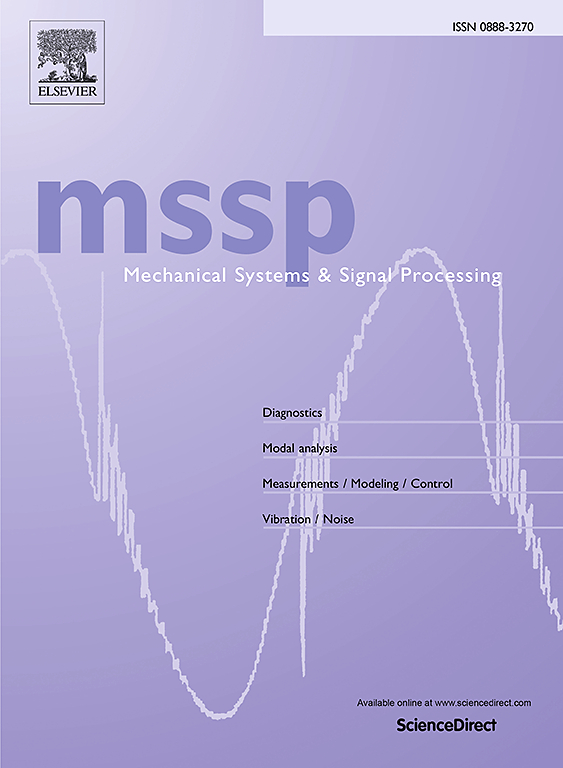A health monitoring and early fault detection method of rotating machines based on latent variables of diffusion model
IF 8.9
1区 工程技术
Q1 ENGINEERING, MECHANICAL
引用次数: 0
Abstract
Deep generative models have gained prominence in the intelligent condition monitoring of rotating machines, primarily utilizing reconstruction errors as health indicators (HIs) to represent actual health conditions. This approach to constructions of HIs significantly influences the robustness and effectiveness of health monitoring and early fault detection. The incorporation of latent variables (LVs) is posited to alleviate these challenges. Nonetheless, the limited modeling capabilities of existing deep generative models constrain their ability to capture intricate patterns. In response, this paper introduces a novel health monitoring and fault prediction methodology leveraging the latent variables derived from diffusion models. A network architecture based on a multi-head self-attention mechanism (MHSA) is designed to effectively map time series monitoring data into the latent space. The diffusion model is initially trained using healthy monitoring samples. Subsequently, for each monitoring sample frame, the distributional differences in the latent space between the monitoring and healthy samples are analyzed to construct the HIs. A comprehensive quantitative and qualitative comparison of our proposed method is conducted against baseline models across multiple scenarios. The results underscore the superior robustness and effectiveness of our approach in the condition monitoring and fault prediction of rotating machines.
基于扩散模型潜变量的旋转机械健康监测与早期故障检测方法
深度生成模型在旋转机械的智能状态监测中得到了突出的应用,主要利用重构误差作为健康指标(HIs)来表示实际的健康状况。这种构造HIs的方法显著影响了健康监测和早期故障检测的鲁棒性和有效性。潜在变量(lv)的结合可以缓解这些挑战。尽管如此,现有的深度生成模型有限的建模能力限制了它们捕捉复杂模式的能力。为此,本文介绍了一种利用扩散模型衍生的潜在变量的新型健康监测和故障预测方法。设计了一种基于多头自关注机制(MHSA)的网络架构,将时间序列监测数据有效地映射到潜在空间。扩散模型最初使用健康监测样本进行训练。然后,对每个监测样本帧,分析监测样本和健康样本之间潜在空间的分布差异,构建HIs。对我们提出的方法进行了全面的定量和定性比较,并对多个场景的基线模型进行了比较。结果表明,该方法在旋转机械的状态监测和故障预测中具有良好的鲁棒性和有效性。
本文章由计算机程序翻译,如有差异,请以英文原文为准。
求助全文
约1分钟内获得全文
求助全文
来源期刊

Mechanical Systems and Signal Processing
工程技术-工程:机械
CiteScore
14.80
自引率
13.10%
发文量
1183
审稿时长
5.4 months
期刊介绍:
Journal Name: Mechanical Systems and Signal Processing (MSSP)
Interdisciplinary Focus:
Mechanical, Aerospace, and Civil Engineering
Purpose:Reporting scientific advancements of the highest quality
Arising from new techniques in sensing, instrumentation, signal processing, modelling, and control of dynamic systems
 求助内容:
求助内容: 应助结果提醒方式:
应助结果提醒方式:


